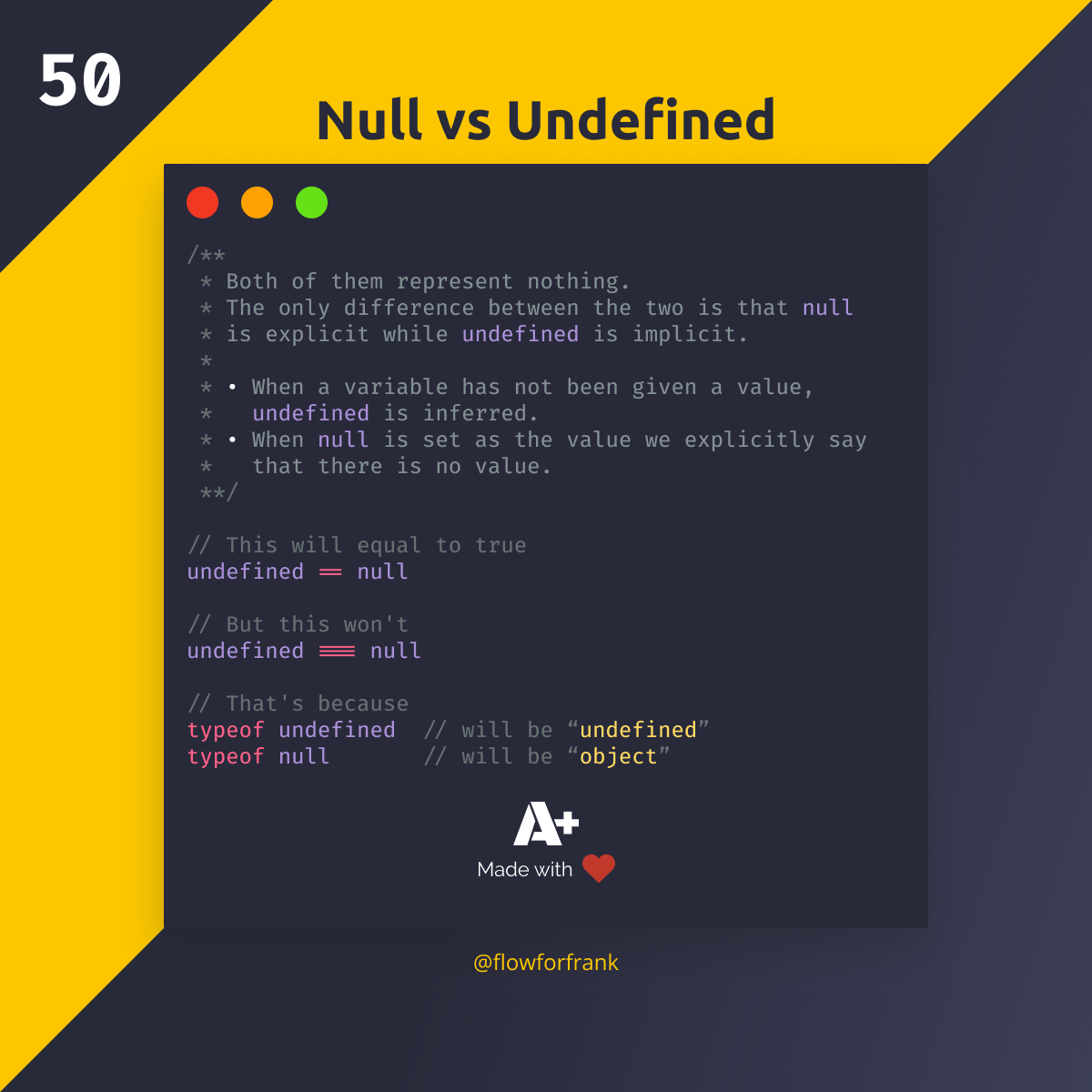

So using var x = null overrides the default undefined value.Įxplicitly using var x = null in comparison with undefined, ensures that, when using “=” instead of “=”, you’ll get the right false value, false.

Well explain the concept of null values and how to use them in your code. The recommendation is to always declare your variables at the top of your scope.ĭeclaring x outside any function denotes a global variable (usually not a pattern), where, if no value is assigned, a undefined value is the default value. Learn how to check for null values in Javascript with this easy to follow guide. null is not an identifier for a property of the global object, like undefined can be. A variable in JavaScript that has a null value is of the object. Try it Syntax null Description The value null is written with a literal: null. It is supposed to denote something that does not exist. It is one of JavaScript's primitive values and is treated as falsy for boolean operations. null is a special value in JavaScript that represents a missing object. This also usually leads to unexpected behavior, where shadowing a variable leads to a completely different result. The null value represents the intentional absence of any object value. Im guessing youre actually looking for empty strings, in which case this simpler. Using x without declaring it first (without using an explicit var statement) denotes a variable which declaration will be hoisted by the interpreter. JavaScript is very flexible with regards to checking for null values.

The discussion here is about three things: undeclared, undefined or null. Surprisingly, if you run the following in your firebug console. And of course null, to ensure a variable has a true value meaning something meaningful you could simply use the following.Īgain, a falsy value, a true value it’s not. Simply put, null is a JavaScript keyword that indicates the absence of a value.


 0 kommentar(er)
0 kommentar(er)
